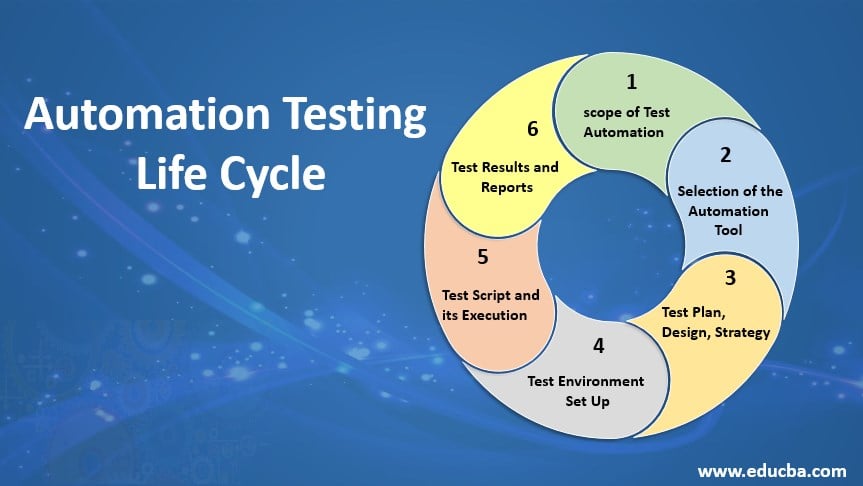The Value of Automation Testing in Agile Growth Environments
The Value of Automation Testing in Agile Growth Environments
Blog Article
Ensuring Success in Automation Examining: Key Metrics, Difficulties, and Solutions Every QA Group Should Know
In the realm of software quality assurance, the landscape of automation screening is ever-evolving, requiring a thorough approach to make sure seamless procedures. The journey to understanding automation testing is led with subtleties that call for an eager eye for monitoring, analysis, and constant improvement. As the industry propels forward, the pursuit for optimal performance in automation screening continues to be a constant search, urging QA groups to equip themselves with the knowledge and techniques vital for triumph.
Importance of Key Metrics
Comprehending the relevance of vital metrics is crucial for evaluating the performance and efficiency of automation testing procedures. Key metrics function as measurable steps that supply valuable insights into numerous facets of the screening process, such as test protection, examination implementation time, defect thickness, and examination situation performance. By analyzing these metrics, QA groups can determine traffic jams, ineffectiveness, and locations for improvement within their automation screening framework.
One crucial facet of essential metrics is their capability to track progression and monitor the overall health and wellness of the testing procedure (automation testing). They make it possible for stakeholders to make enlightened decisions based on data-driven understandings, which can result in more reliable testing techniques and better resource allocation. Additionally, essential metrics can assist teams established practical goals, gauge the success of automation efforts, and demonstrate the ROI of automation testing initiatives

Common Challenges Faced
Challenges commonly come across in automation testing procedures can substantially influence the overall efficiency and effectiveness of QA groups. Among the significant obstacles is the selection of the appropriate test instances for automation. Not all examination cases appropriate for automation, and selecting the incorrect ones can lead to lost time and sources. Furthermore, keeping examination manuscripts can be a daunting job, particularly as the application goes through regular changes. Examination script upkeep requires continuous updates and alterations to ensure they show the present functionality accurately. Another typical difficulty is the first financial investment required for establishing automation structures and tools. This can be an obstacle for some companies, specifically smaller sized ones with minimal budgets. Automation testing might not cover all elements of screening, such as functionality and user experience testing, which still call for hands-on treatment. Overcoming these difficulties calls for correct preparation, strategic examination instance choice, robust upkeep procedures, ample sources, and a clear understanding of the restrictions of automation screening.
Reliable Solutions for Obstacles
To resolve the obstacles run into in automation testing, carrying out reliable services is vital for boosting the efficiency and performance of QA teams. One vital service is to buy robust training programs for QA groups to ensure they have the required skills to efficiently make use of automation devices. Training can connect expertise gaps, improve understanding of automation structures, and boost scripting abilities, eventually bring about extra efficient examination development and implementation.
An additional crucial remedy is to develop clear interaction channels within the QA group and with various other stakeholders, such as designers and job supervisors. Effective communication assists in aligning assumptions, sharing progress updates, and immediately resolving issues or obstacles that might emerge during the automation testing process.

Surveillance and Analysis Methods
Carrying out efficient monitoring and analysis methods is essential for making sure the success and performance of automation testing procedures. By making use find more of monitoring devices, QA groups can track the performance of examination manuscripts, determine bottlenecks, and identify locations for improvement. Real-time tracking enables fast detection of concerns, allowing rapid feedback and resolution. In addition, analyzing examination outcomes and metrics provides useful insights into the top quality of the software program being examined and the efficiency of the testing method.
One key technique in surveillance and analysis is using dashboards that consolidate relevant metrics and KPIs in a visually easily accessible format. These dashboards offer a thorough summary of test implementation status, examination coverage, flaw fads, and various other critical info. Frequently examining and examining these dashboards can aid QA teams make informed choices, focus on jobs, and optimize testing initiatives.
Furthermore, executing automated alerts and notices based upon predefined limits can enhance proactive monitoring and timely treatment. By establishing informs for efficiency deviations or examination failings, groups can attend to issues without delay and avoid them from escalating. On the whole, surveillance and evaluation strategies play an essential role in making certain the efficiency and success of automation testing initiatives.
Constant Renovation Techniques
Enhancing the efficacy of automation screening procedures demands the regular improvement of methods and methods. Continual improvement strategies are pivotal for QA groups to adjust to advancing innovations and deliver premium software. One key approach to enhancing automation screening procedures is to conduct normal testimonials and retrospectives. By evaluating past screening cycles, groups can determine traffic jams, inefficiencies, and locations go to my site for enhancement. Executing comments loopholes and integrating lessons discovered into future screening structures can yield considerable renovations in time.

Conclusion
To conclude, it is important for QA groups to understand the vital metrics, obstacles, and remedies in automation testing to make sure success. By carefully checking and assessing data, implementing efficient solutions to typical challenges, and constantly improving methods, QA teams can optimize their screening procedures and provide high-grade software products. Following these techniques will eventually bring about a lot more effective and efficient automation testing techniques.
By evaluating these metrics, QA teams can determine bottlenecks, ineffectiveness, and areas for renovation within their automation screening framework.
In addition, crucial metrics can help groups established reasonable objectives, determine the success of automation initiatives, and show the ROI of automation testing efforts.
Obstacles frequently run about his into in automation screening procedures can substantially affect the overall effectiveness and performance of QA groups. Automation testing might not cover all elements of testing, such as use and user experience testing, which still call for hand-operated treatment.In verdict, it is vital for QA teams to recognize the essential metrics, obstacles, and solutions in automation screening to make sure success.
Report this page